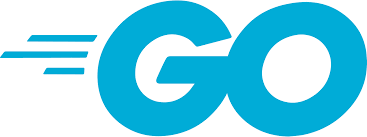Golang Tutorials - Data types Basic Guide with examples
Learn basic inbuilt predefined data types in golang tutorials with examples.
Go language data types
Go is a modern open-source programming language from Google.
It is a statically typed language, which means type checking is done at compile time. Variable can be declared a type or inferred from type inference.
Datatypes in golang define the same type of data that can be used to allocate memory size for storing the particular value.
It has several built-in types similar to any programming language.
Several data types can be categorized based on similar data types.
- Numeric types - This represents numeric numbers which can be divided into Integers, Floating, and other types
- String types - This represents a group of characters
- Boolean types - It represents boolean values - true or false
- Custom Data types - It Contains different types like pointers, Array, Struct, Union, Map, and Channel types
Golang Integer data types
These are used to store the positive and negative numbers including zero. It has various types based on size and signed types.
Signed Integer types
Signed integer allows the values positives and negatives including zero. It also has an int data type that changes based on the machine environment
| Inbuilt Type | Size in bytes | Range of values |
|---|---|---|
| int8 | 1 Byte | -128 to 127 |
| int16 | 2 Bytes | -32768 to 32767 |
| int32 | 4 Bytes | -2147483648 to 2147483647 |
| int64 | 8 Bytes | -329223372036854775808768 to 9223372036854775807 |
Unsigned Integer types
An unsigned integer allows the values positive values including zero. It does not allow negative values
| Inbuilt Type | Size in bytes | Range of values |
|---|---|---|
| uint8 | 1 Byte | 0 to 255 |
| uint16 | 2 Byte | 0 to 65535 |
| uint32 | 4 Byte | 0 to 4294967295 |
| uint64 | 8 Byte | 0 to 18446744073709551615 |
Other Numeric types There are other numeric types bytes etc.
| Inbuilt Type | Size in bytes | Range of values |
|---|---|---|
| byte | 1 Byte | 0 to 255same as uint8 |
| rune | 2 Byte | 0 to 65535 same as int32 |
| uint | 4 or 8 Byte | based on Environment |
| int | 4 or 8 Byte | based on Environment |
| uintptr | 4 or 8 Byte | unsigned int to store pointer bits |
Example
This example covers the following things.
- Type inference example
- The octal number always prefixed with 0
- Hexadecimal number prefixed with 0x
It has no char data type in java language. Byte and rune are used to represent char types. a byte represents characters in ASCII values. The rune represents in UNICODE character in the UTF-8 format
package main
import "fmt"
func main() {
var int16Variable int16 = 12
var intVariable = 85 // Type inference example
var uintVariable uint = 40
var hexVariable = 0xBC
var octalVariable = 013
fmt.Printf("%d, %d, %d, %#x, %#o\n", int16Variable, intVariable,
uintVariable, hexVariable, octalVariable)
var byteVariable byte = 'C'
var runeVariable rune = 'a'
fmt.Printf("%c - %d and %c - %U\n", byteVariable, byteVariable,
runeVariable, runeVariable)
}
The output of the above program is
12, 85, 40, 0xbc, 013
C - 67 and a - U+0061
Floating numeric types
Like any programming language, Floats types represent numbers with decimal values(3.21). For example, when you declared a float value like this, the compiler infers the type as float64. The default type is float64.
var floatVariable = 47895.587
And also complex data type default type is complex128. type inference applied on the complex number also complex128
var complexVariable = 1 + 6i
| Inbuilt Type | Size in bytes | Description |
|---|---|---|
| float32 | 4 Byte | IEEE-754 Floating numeric values |
| float64 | 8 Byte | IEEE-754 Floating numeric values |
| complex64 | 8 Byte | Complex numbers with float32 real and imaginary parts |
| complex128 | 4or 8 Byte | Complex numbers with float64 real and imaginary parts |
| |uintptr| 4 or 8 Byte|unsigned int to store pointer bits|
Boolean Datatypes
Go language has data type bool to store boolean values. It has predefined values true or false.
var boolVariable = true
var booleVariable1 bool = false
String Datatype
The string is a group of characters such as alpha letters and numers. Characters in golang are treated as bytes. The string can be declared using double quotes or backticks. Double quotes enclosed strings cannot be multiple lines, but contains newline characters such \n. Backticks enclosed string can contain multiple lines
var str1 = "Cloud Hadoop Blog"
var str2 = `This is programming blog for
full stack technolgies`
